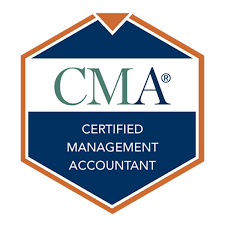
UAE +971 56 1 55 44 66 – Kuwait +965 51 38 38 68
UAE +971 56 1 55 44 66
Kuwait +965 51 38 38 68
Menu

UAE +971 56 1 55 44 66 – Kuwait +965 51 38 38 68
UAE +971 56 1 55 44 66
Kuwait +965 51 38 38 68

If you’re preparing for the CMA exam, understanding the CMA course content is the first and most powerful step. Every student who dreams of becoming a Certified Management Accountant should have a clear picture of what’s inside the syllabus. The CMA course content gives you the structure, topics, and exam weightage that help you plan your study the smart way — not the hard way.
Many students feel overwhelmed when they first begin, but once you go through the official CMA course content, everything becomes clearer. You’ll know exactly what to study, how much time to give each topic, and how to plan your journey toward becoming a CMA.
Part 1 of the CMA course content focuses on the internal financial operations of an organization — how to plan, manage performance, and make decisions using analytics.
This section develops your skills in strategic planning, budgeting, and forecasting using techniques like regression and learning curves. You’ll prepare pro forma statements and cash flow forecasts to guide business decisions.
Learn to evaluate performance using variance analysis, KPIs, ROI, residual income, and the balanced scorecard approach. It teaches you how to assess business units, products, and customer profitability.
This part explains cost behavior, costing systems (job order, activity-based, life-cycle), and supply chain optimization through lean and ERP systems. It also includes benchmarking and continuous improvement.
Understand corporate governance, internal audit frameworks, and risk management. You’ll also study system security, control testing, and business continuity planning.
Modern finance runs on technology, and this topic covers ERP systems, data governance, process automation, and business intelligence tools for better financial decision-making.
Part 2 of the CMA course content prepares you to think strategically — how to make decisions that drive long-term success and shareholder value.
You’ll master ratio analysis, trend evaluation, and profitability analysis. You’ll also understand how exchange rates, inflation, and accounting changes affect financial results.
Learn the relationship between risk and return, cost of capital, valuation, and working capital management. You’ll also explore corporate restructuring and international finance.
Develop your decision-making power through CVP analysis, marginal costing, pricing strategies, and make-or-buy decisions. It’s where numbers meet strategy.
Understand different types of risks, their identification, mitigation, and how to build a strong risk culture within the organization.
Covers capital budgeting techniques like NPV, IRR, payback, and sensitivity analysis, helping you decide which investments truly add value.
Ethics is the heart of management accounting. You’ll study the IMA Statement of Ethical Professional Practice, fraud triangle, and the principles of corporate responsibility and data ethics.
Understanding the CMA course content is not just about knowing what’s included — it’s about preparing smarter. Here’s why every student should start with it:
The CMA syllabus is vast, but when you understand the CMA course content, you’ll know exactly where to focus. This ensures your study time is efficient and goal-oriented.
The content outline acts as a complete checklist. You can compare your study materials with the official topics and make sure you haven’t missed anything crucial.
Since each topic comes with a percentage weight, you can plan your schedule proportionately — dedicating more time to high-weight topics like Performance Management or Business Decision Analysis.
When you prepare following the CMA course content, you’ll walk into the exam knowing you’ve covered everything the IMA expects. That confidence makes all the difference.